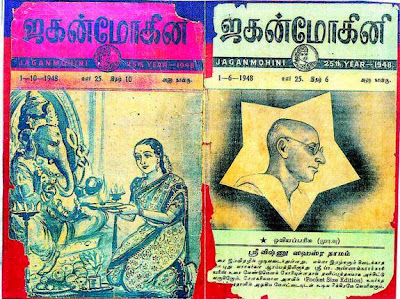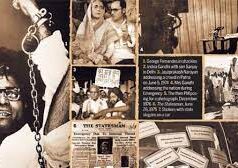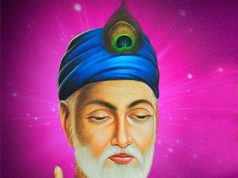
Chennai. In 1925, Mahatma Gandhi and Kasturba participated in a meeting exclusively arranged for mahilas in the Vasanta Mandapam of Parthasarathy Temple in Triplicane, Chennai. In the course of the meeting, Kasturba appealed the gathering to generously donate for taking forward the Harijan service movement. A simple orthodox woman on hearing these words, came to the stage, removed all her bangles, ring, nose rings and ear studs and placed them at the feet of Gandhiji. When she went back home which was just around 100 metres from the venue, everyone in the family was astonished. It took some time for them to comprehend. She convinced them and the result was still more astonishing. Yes, all of them willingly handed over all their jewels and unitedly donated to the movement in the subsequent meetings. That was the personality of an iconic lady Vaithamanidhi Mudumbai Kothainayaki Ammal (referred as Kothainayaki hereafter).
Kothai is the other name of Saint Poet Andal. Similar to Andal, this Kothai too exemplified the concept of Servant Leader, that is leading by example, guiding the team not by commanding but by love and compassion, being the first to extend the arms and shoulders to move the rath.
Born on December 1, 1901 and got married when just she was 5 years old, without a formal education what she had accomplished in her life time is an everlasting source of inspiration for the centuries to come. Considering the paucity of space, we will try to capture a few glimpses of this multi-faceted personality –
After meeting Ba and Bapu in 1925 as stated earlier Kothai took to wearing khadi, and even hawked khadi on the streets of Madras.
Kothai was a great public speaker making speeches against British rule. She participated and lead protest marches. “Once during a protest, the police tried to stop her by dousing her with sewer water, but she continued to raise slogans. So, they arrested her and sent her to the Vellore prison,” as Kothai’s daughter-in-law Padmini recalled.
Out of her self- efforts, she gained mastery in Shastriya Sangeet and used to sing Mahakavi Bharatiyar’s poems in the stages to motivate the people to participate in the freedom movement. Bharatiyar himself is said to have listened and appreciated her renderings. She also groomed many young upcoming artists to sing Bharati’s songs. One of them was the legendary DK Pattammal. When All India Radio was started in 1938, Rajaji asked Kothai to sing the prayer, and that was the first ‘singing’ voice heard on the radio.
In 1925, on the suggestion of wellknown author Vaduvur Doraiswami Iyengar, Kothai took over the magazine Jaganmohini, that he had been running for two years. Within four months of taking over, she had 1,000 subscribers. Thus, she was the first woman editor in Tamil. Though many in her own community opposed her and burnt the copies of the magazine, she remained unfazed. Even when she was arrested for participating in the freedom struggle, she will write her pieces in scraps of papers and used to smuggle through her husband VM Sampath who managed to run the journal and the household.
She was also the first novelist, and in all her novels, she advocated simple life, high thinking, revolutionary ideas without denigrating the national ethos. Her first novel ‘Vaidehi’ was serialised in Jaganmohini, and later brought out as a book by LIFCO publishers. The very first novel earned the accolades of the readers and the leading dailies like The Hindu and Swadesamitran. Her second novel ‘Padma Sundaram’ was translated into Malayalam.
Her granddaughter Vijayalakshmi recalls that S. Ramanathan Chettiar, one of Vai.Mu.Ko’s fans, moved by her book ‘Aparaadhi’, which advocated widow remarriage, arranged for the remarriage of many widows in his conservative community.
In her play, ‘Vatsakumar’, Vai.Mu.Ko criticised those who frowned upon Bharatanatyam as being an immoral art.
Jaganmohini’s circulation increased, and it sold in the thousands in Malaysia, Penang, Rangoon and South Africa. In 1937, Kothai bought her own press to print the magazine.
Upon Gandhiji’s death, she started the Mahatmaji Seva Sangam at North Tank Street, Triplicane, and here girls were taught music, dance, public speaking and Hindi. She organised concerts and lectures at the sangam.
Kothai was also on the Film Censor Board for 10 years. She had censored a scene in the film, ‘Adhrishtam’. But when the film was released, she found that the scene had been sneaked in. Furious, she ensured that the scene was cut, and also asked agents of Jaganmohini in other towns to check and report.
To conclude, we must underscore a basic principle of Hindu way of life founded on the solid bedrock of family cooperation and encouragement. It must be clearly learnt that Kothainayaki Ammal could make a stamp in all her endeavours, across the spectrum of fields essentially because of the unstinted support of progressive and forward-looking husband, father-in-law and others in the family.
We bow our heads in respect of this iconic mother-sister and take pride in paying tributes to Kothai.
Courtesy : VSK BHARATH















